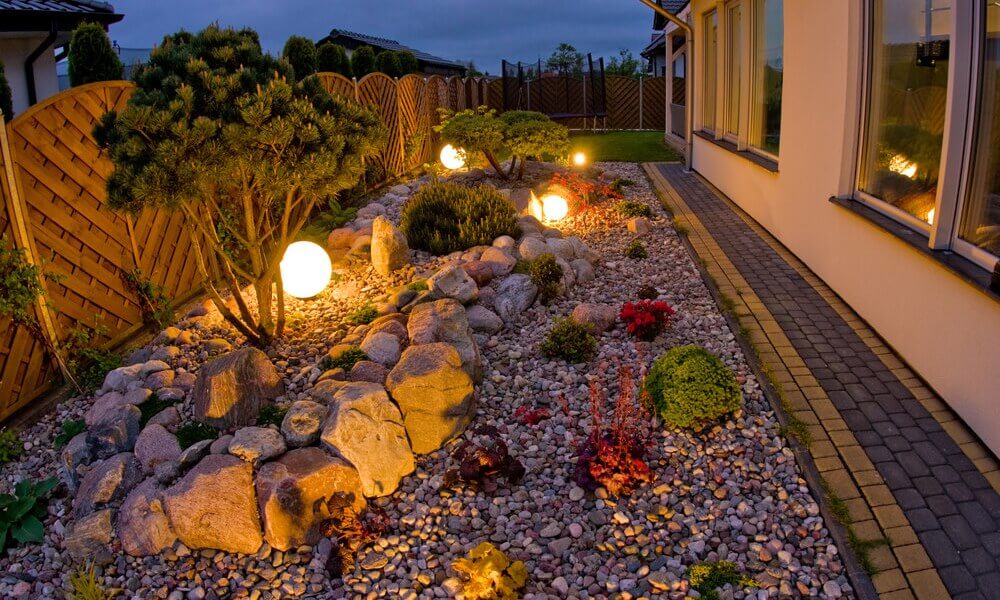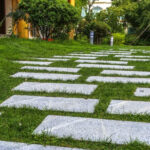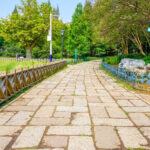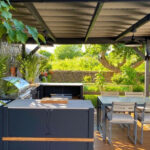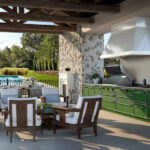A beautifully designed landscape is more than just a collection of plants—it’s a carefully curated balance between structure and nature. While hardscaping provides the foundation, softscaping brings vibrancy, movement, and life to any outdoor space. Thoughtfully selected trees, shrubs, flowers, and grasses not only enhance aesthetics but also contribute to environmental sustainability and long-term enjoyment.
Whether you’re looking to create a lush garden retreat or a low-maintenance, water-efficient yard, softscaping is the key to a thriving, inviting outdoor space.
What is Softscaping?
Softscaping refers to the living elements of a landscape, which include:
🌳 Trees & Shrubs – Offer shade, privacy, and seasonal beauty.
🌻 Flowers & Perennials – Add bursts of color and attract pollinators.
🍀 Grass & Ground Cover – Create lush, green spaces or functional alternatives to traditional lawns.
🌵 Drought-Tolerant Plants – Reduce water consumption while maintaining visual appeal.
🍂 Seasonal & Evergreen Plants – Provide year-round interest and texture.
Unlike hardscaping (patios, walkways, and retaining walls), softscaping is ever-changing, responding to the seasons, weather, and environmental factors.
The Benefits of Softscaping
Softscaping offers more than just aesthetics—it enhances your property’s sustainability, functionality, and overall enjoyment. Here’s how:
1. Increases Curb Appeal & Property Value
A well-planned softscape significantly boosts curb appeal and real estate value. Vibrant gardens, structured greenery, and layered plantings make any home more visually appealing, attracting potential buyers and creating a welcoming atmosphere.
2. Supports Environmental Sustainability
Softscaping plays a vital role in reducing carbon footprints, improving air quality, and supporting biodiversity. Trees absorb carbon dioxide, flowering plants attract pollinators, and native vegetation reduces the need for excessive watering and fertilizers.
3. Provides Shade & Energy Efficiency
Strategically placed trees and shrubs provide natural shade, keeping outdoor spaces cooler in the summer while reducing energy costs inside your home. Proper landscaping can create windbreaks that help insulate homes during colder months as well.
4. Promotes Relaxation & Well-Being
Spending time in green spaces has been scientifically proven to reduce stress, boost mood, and enhance mental clarity. A thoughtfully designed softscape transforms any yard into a tranquil escape for relaxation and outdoor enjoyment.
5. Controls Erosion & Enhances Drainage
Softscaping helps stabilize soil, preventing erosion and managing stormwater runoff. Plants with deep root systems strengthen the landscape, while ground cover and shrubs act as natural barriers against water damage.
Choosing the Right Softscape for Your Space
Not all softscaping is the same—different landscapes require different approaches based on climate, maintenance preferences, and design goals. Here are some key factors to consider:
✔ Climate & Soil Conditions – Select plants that thrive in your specific region to ensure longevity and sustainability.
✔ Water Requirements – Opt for drought-tolerant plants if you live in an area with water restrictions.
✔ Maintenance Needs – Consider how much time you can dedicate to upkeep. Some landscapes require weekly care, while others can flourish with minimal effort.
✔ Aesthetic Goals – Whether you prefer a structured, manicured look or a wild, natural garden, plant choices should align with your vision.
The Softscaping Process: From Design to Installation
A successful softscape design requires careful planning, professional execution, and ongoing maintenance. Here’s what the process typically involves:
1. Planning & Design Consultation
Every outdoor space is unique, so it’s important to assess key factors such as sunlight exposure, soil quality, drainage, and layout. A well-thought-out design will ensure that plant selections complement the overall landscape.
2. Plant Selection & Placement
Choosing the right greenery is essential to balance aesthetics, sustainability, and long-term health. This step includes determining the right mix of trees, flowers, and ground cover while considering spacing and growth patterns.
3. Professional Installation
Once the design is finalized, the installation process begins. This involves:
✅ Soil Preparation – Ensuring optimal conditions for plant growth.
✅ Irrigation Setup – Installing watering systems for long-term sustainability.
✅ Mulching & Fertilization – Protecting and nourishing plants for healthier growth.
4. Ongoing Maintenance & Care
Regular watering, pruning, fertilizing, and seasonal adjustments ensure your softscape stays lush and vibrant year-round.
Who Can Benefit from Softscaping?
Softscaping is ideal for a wide range of homeowners, property managers, and outdoor enthusiasts. You may benefit from softscaping if:
✅ You want a visually stunning outdoor space – A well-planned garden adds beauty, texture, and color.
✅ You prefer a low-maintenance yard – Certain plants, like succulents and native species, require minimal care.
✅ You’re eco-conscious – Sustainable landscaping reduces water waste and supports local wildlife.
✅ You need better drainage and erosion control – Trees, shrubs, and ground cover help stabilize soil and absorb excess water.
✅ You enjoy gardening and outdoor living – Softscaping enhances your outdoor experience, making it a peaceful and inviting space.
Elevate Your Landscape with Thoughtful Softscaping
A well-designed softscape brings life, color, and purpose to any outdoor space. Whether you’re envisioning a lush backyard retreat, a drought-tolerant xeriscape, or a simple yet elegant garden border, choosing the right plants and layout is essential.
Ready to transform your landscape into a vibrant, thriving outdoor haven? Explore different softscaping options today and bring your dream garden to life!

